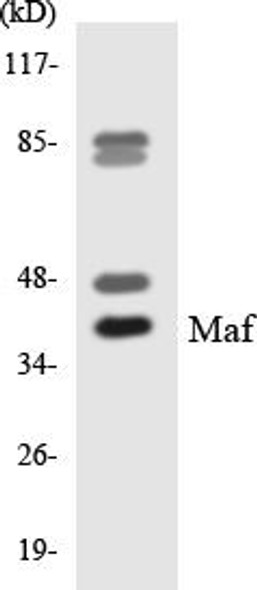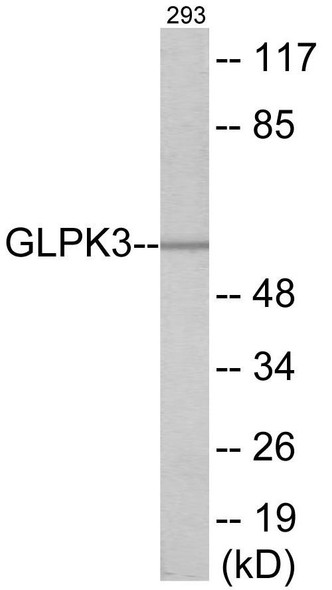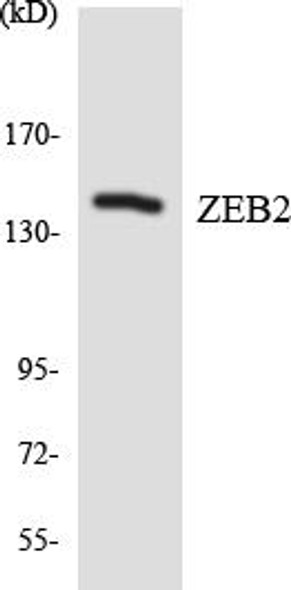MASTL Colorimetric Cell-Based ELISA
- SKU:
- CBCAB01179
- Product Type:
- ELISA Kit
- ELISA Type:
- Cell Based
- Research Area:
- Cell Cycle
- Reactivity:
- Human
- Mouse
- Detection Method:
- Colorimetric
Description
MASTL Colorimetric Cell-Based ELISA
The MASTL Colorimetric Cell-Based ELISA Kit is a cutting-edge tool for researchers looking to accurately measure levels of MASTL in cell lysates and culture supernatants. This kit offers exceptional sensitivity and specificity, guaranteeing precise and consistent results for a variety of research applications.MASTL, or microtubule-associated serine/threonine kinase-like protein, is a key regulator of cell division and plays a critical role in cell cycle progression. Dysregulation of MASTL has been implicated in various diseases, including cancer and neurodevelopmental disorders, making it a valuable biomarker for studying these conditions and potentially developing targeted therapies.
With the MASTL Colorimetric Cell-Based ELISA Kit, researchers can confidently assess MASTL levels and gain insights into its role in disease pathogenesis, offering new avenues for therapeutic intervention. Upgrade your research capabilities with this innovative and reliable assay kit from AssayGenie.
| Product Name: | MASTL Colorimetric Cell-Based ELISA |
| Product Code: | CBCAB01179 |
| ELISA Type: | Cell-Based |
| Target: | MASTL |
| Reactivity: | Human, Mouse |
| Dynamic Range: | > 5000 Cells |
| Detection Method: | Colorimetric 450 nmStorage/Stability:4°C/6 Months |
| Format: | 96-Well Microplate |
The MASTL Colorimetric Cell-Based ELISA Kit is a convenient, lysate-free, high throughput and sensitive assay kit that can detect MASTL protein expression profile in cells. The kit can be used for measuring the relative amounts of MASTL in cultured cells as well as screening for the effects that various treatments, inhibitors (ie siRNA or chemicals), or activators have on MASTL.
Qualitative determination of MASTL concentration is achieved by an indirect ELISA format. In essence, MASTL is captured by MASTL-specific primary antibodies while the HRP-conjugated secondary antibodies bind the Fc region of the primary antibody. Through this binding, the HRP enzyme conjugated to the secondary antibody can catalyze a colorimetric reaction upon substrate addition. Due to the qualitative nature of the Cell-Based ELISA, multiple normalization methods are needed:
| 1. | A monoclonal antibody specific for human GAPDH is included to serve as an internal positive control in normalizing the target absorbance values. |
| 2. | Following the colorimetric measurement of HRP activity via substrate addition, the Crystal Violet whole-cell staining method may be used to determine cell density. After staining, the results can be analysed by normalizing the absorbance values to cell amounts, by which the plating difference can be adjusted. |
| Database Information: | Gene ID: 84930, UniProt ID: Q96GX5, OMIM: 188000/608221, Unigene: Hs.276905 |
| Gene Symbol: | MASTL |
| Sub Type: | None |
| UniProt Protein Function: | MASTL: Serine/threonine kinase that plays a key role in M phase by acting as a regulator of mitosis entry and maintenance. Acts by promoting the inactivation of protein phosphatase 2A (PP2A) during M phase: does not directly inhibit PP2A but acts by mediating phosphorylation and subsequent activation of ARPP19 and ENSA at 'Ser-62' and 'Ser-67', respectively. ARPP19 and ENSA are phosphatase inhibitors that specifically inhibit the PPP2R2D (PR55-delta) subunit of PP2A. Inactivation of PP2A during M phase is essential to keep cyclin-B1-CDK1 activity high. Following DNA damage, it is also involved in checkpoint recovery by being inhibited. Phosphorylates histone protein in vitro; however such activity is unsure in vivo. May be involved in megakaryocyte differentiation. Defects in MASTL are the cause of thrombocytopenia type 2 (THC2). Thrombocytopenia is defined by a decrease in the number of platelets in circulating blood, resulting in the potential for increased bleeding and decreased ability for clotting. Belongs to the protein kinase superfamily. AGC Ser/Thr protein kinase family. 3 isoforms of the human protein are produced by alternative splicing. |
| UniProt Protein Details: | Protein type:Protein kinase, AGC; EC 2.7.11.1; Protein kinase, Ser/Thr (non-receptor); Kinase, protein; AGC group; MAST family Chromosomal Location of Human Ortholog: 10p12.1 Cellular Component: nucleoplasm; centrosome; cytoplasm; nucleus; cleavage furrow Molecular Function:protein serine/threonine kinase activity; protein phosphatase 2A binding; kinase activity; ATP binding Biological Process: mitosis; regulation of cell cycle; cell division; mitotic cell cycle; G2/M transition of mitotic cell cycle; negative regulation of protein phosphatase type 2A activity; protein amino acid phosphorylation; response to DNA damage stimulus Disease: Thrombocytopenia 2 |
| NCBI Summary: | This gene encodes a microtubule-associated serine/threonine kinase. Mutations at this locus have been associated with autosomal dominant thrombocytopenia, also known as thrombocytopenia-2. Alternatively spliced transcript variants have been described for this locus. [provided by RefSeq, Feb 2010] |
| UniProt Code: | Q96GX5 |
| NCBI GenInfo Identifier: | 288806587 |
| NCBI Gene ID: | 84930 |
| NCBI Accession: | NP_001165774.1 |
| UniProt Secondary Accession: | Q96GX5,Q5T8D5, Q5T8D7, Q8NCD6, Q96SJ5, |
| UniProt Related Accession: | Q96GX5 |
| Molecular Weight: | 97,319 Da |
| NCBI Full Name: | serine/threonine-protein kinase greatwall isoform 1 |
| NCBI Synonym Full Names: | microtubule associated serine/threonine kinase-like |
| NCBI Official Symbol: | MASTL |
| NCBI Official Synonym Symbols: | GW; GWL; THC2; hGWL; MAST-L; GREATWALL; RP11-85G18.2 |
| NCBI Protein Information: | serine/threonine-protein kinase greatwall; greatwall protein kinase; microtubule-associated serine/threonine-protein kinase-like |
| UniProt Protein Name: | Serine/threonine-protein kinase greatwall |
| UniProt Synonym Protein Names: | Microtubule-associated serine/threonine-protein kinase-like |
| UniProt Gene Name: | MASTL |
| UniProt Entry Name: | GWL_HUMAN |
| Component | Quantity |
| 96-Well Cell Culture Clear-Bottom Microplate | 2 plates |
| 10X TBS | 24 mL |
| Quenching Buffer | 24 mL |
| Blocking Buffer | 50 mL |
| 15X Wash Buffer | 50 mL |
| Primary Antibody Diluent | 12 mL |
| 100x Anti-Phospho Target Antibody | 60 µL |
| 100x Anti-Target Antibody | 60 µL |
| Anti-GAPDH Antibody | 60 µL |
| HRP-Conjugated Anti-Rabbit IgG Antibody | 12 mL |
| HRP-Conjugated Anti-Mouse IgG Antibody | 12 mL |
| SDS Solution | 12 mL |
| Stop Solution | 24 mL |
| Ready-to-Use Substrate | 12 mL |
| Crystal Violet Solution | 12 mL |
| Adhesive Plate Seals | 2 seals |
The following materials and/or equipment are NOT provided in this kit but are necessary to successfully conduct the experiment:
- Microplate reader able to measure absorbance at 450 nm and/or 595 nm for Crystal Violet Cell Staining (Optional)
- Micropipettes with capability of measuring volumes ranging from 1 µL to 1 ml
- 37% formaldehyde (Sigma Cat# F-8775) or formaldehyde from other sources
- Squirt bottle, manifold dispenser, multichannel pipette reservoir or automated microplate washer
- Graph paper or computer software capable of generating or displaying logarithmic functions
- Absorbent papers or vacuum aspirator
- Test tubes or microfuge tubes capable of storing ≥1 ml
- Poly-L-Lysine (Sigma Cat# P4832 for suspension cells)
- Orbital shaker (optional)
- Deionized or sterile water
*Note: Protocols are specific to each batch/lot. For the correct instructions please follow the protocol included in your kit.
| Step | Procedure |
| 1. | Seed 200 µL of 20,000 adherent cells in culture medium in each well of a 96-well plate. The plates included in the kit are sterile and treated for cell culture. For suspension cells and loosely attached cells, coat the plates with 100 µL of 10 µg/ml Poly-L-Lysine (not included) to each well of a 96-well plate for 30 minutes at 37°C prior to adding cells. |
| 2. | Incubate the cells for overnight at 37°C, 5% CO2. |
| 3. | Treat the cells as desired. |
| 4. | Remove the cell culture medium and rinse with 200 µL of 1x TBS, twice. |
| 5. | Fix the cells by incubating with 100 µL of Fixing Solution for 20 minutes at room temperature. The 4% formaldehyde is used for adherent cells and 8% formaldehyde is used for suspension cells and loosely attached cells. |
| 6. | Remove the Fixing Solution and wash the plate 3 times with 200 µL 1x Wash Buffer for five minutes each time with gentle shaking on the orbital shaker. The plate can be stored at 4°C for a week. |
| 7. | Add 100 µL of Quenching Buffer and incubate for 20 minutes at room temperature. |
| 8. | Wash the plate 3 times with 1x Wash Buffer for 5 minutes each time. |
| 9. | Add 200 µL of Blocking Buffer and incubate for 1 hour at room temperature. |
| 10. | Wash 3 times with 200 µL of 1x Wash Buffer for 5 minutes each time. |
| 11. | Add 50 µL of 1x primary antibodies (Anti-MASTL Antibody and/or Anti-GAPDH Antibody) to the corresponding wells, cover with Parafilm and incubate for 16 hours (overnight) at 4°C. If the target expression is known to be high, incubate for 2 hours at room temperature. |
| 12. | Wash 3 times with 200 µL of 1x Wash Buffer for 5 minutes each time. |
| 13. | Add 50 µL of 1x secondary antibodies (HRP-Conjugated AntiRabbit IgG Antibody or HRP-Conjugated Anti-Mouse IgG Antibody) to corresponding wells and incubate for 1.5 hours at room temperature. |
| 14. | Wash 3 times with 200 µL of 1x Wash Buffer for 5 minutes each time. |
| 15. | Add 50 µL of Ready-to-Use Substrate to each well and incubate for 30 minutes at room temperature in the dark. |
| 16. | Add 50 µL of Stop Solution to each well and read OD at 450 nm immediately using the microplate reader. |
(Additional Crystal Violet staining may be performed if desired – details of this may be found in the kit technical manual.)










